第81章 11(2)
To such animals, therefore, as have grinder-teeth this lateral motion is of service; but to those animals that have no grinders it would be quite useless, and they are therefore invariably without it. For nature never makes anything that is superfluous. While in all other animals it is the lower jaw that is movable, in the river crocodile it is exceptionally the upper. This is because the feet in this creature are so excessively small as to be useless for seizing and holding prey; on which account nature has given it a mouth that can serve for these purposes in their stead. For that direction of motion which will give the greater force to a blow will be the more serviceable one in holding or in seizing prey; and a blow from above is always more forcible than one from below. Seeing, then, that both the prehension and the mastication of food are offices of the mouth, and that the former of these two is the more essential in an animal that has neither hands nor suitably formed feet, these crocodiles will derive greater benefit from a motion of the upper jaw downwards than from a motion of the lower jaw upwards. The same considerations explain why crabs also move the upper division of each claw and not the lower. For their claws are substitutes for hands, and so require to be suitable for the prehension of food, and not for its comminution; for such comminution and biting is the office of teeth.
In crabs, then, and in such other animals as are able to seize their food in a leisurely manner, inasmuch as their mouth is not called on to perform its office while they are still in the water, the two functions are assigned to different parts, prehension to the hands or feet, biting and comminution of food to the mouth. But in crocodiles the mouth has been so framed by nature as to serve both purposes, the jaws being made to move in the manner just described.
Another part present in these animals is a neck, this being the necessary consequence of their having a lung. For the windpipe by which the air is admitted to the lung is of some length. If, however, the definition of a neck be correct, which calls it the portion between the head and the shoulders, a serpent can scarcely be said with the same right as the rest of these animals to have a neck, but only to have something analogous to that part of the body.
It is a peculiarity of serpents, as compared with other animals allied to them, that they are able to turn their head backwards without stirring the rest of the body. The reason of this is that a serpent, like an insect, has a body that admits of being curled up, its vertebrae being cartilaginous and easily bent. The faculty in question belongs then to serpents simply as a necessary consequence of this character of their vertebrae; but at the same time it has a final cause, for it enables them to guard against attacks from behind. For their body, owing to its length and the absence of feet, is ill-suited for turning round and protecting the hinder parts; and merely to lift the head, without the power of turning it round, would be of no use whatsoever.
The animals with which we are dealing have, moreover, a part which corresponds to the breast; but neither here nor elsewhere in their body have they any mammae, as neither has any bird or fish. This is a consequence of their having no milk; for a mamma is a receptacle for milk and, as it were, a vessel to contain it. This absence of milk is not peculiar to these animals, but is common to all such as are not internally viviparous. For all such produce eggs, and the nutriment which in Vivipara has the character of milk is in them engendered in the egg. Of all this, however, a clearer account will be given in the treatise on Generation. As to the mode in which the legs bend, a general account, in which all animals are considered, has already been given in the dissertation on Progression. These animals also have a tail, larger in some of them, smaller in others, and the reason for this has been stated in general terms in an earlier passage.
Of all oviparous animals that live on land there is none so lean as the Chamaeleon. For there is none that has so little blood. The explanation of this is to be found in the psychical temperament of the creature. For it is of a timid nature, as the frequent changes it undergoes in its outward aspect testify. But fear is a refrigeration, and results from deficiency of natural heat and scantiness of blood. We have now done with such sanguineous animals as are quadrupedous and also such as are apodous, and have stated with sufficient completeness what external parts they possess, and for what reason they have them.